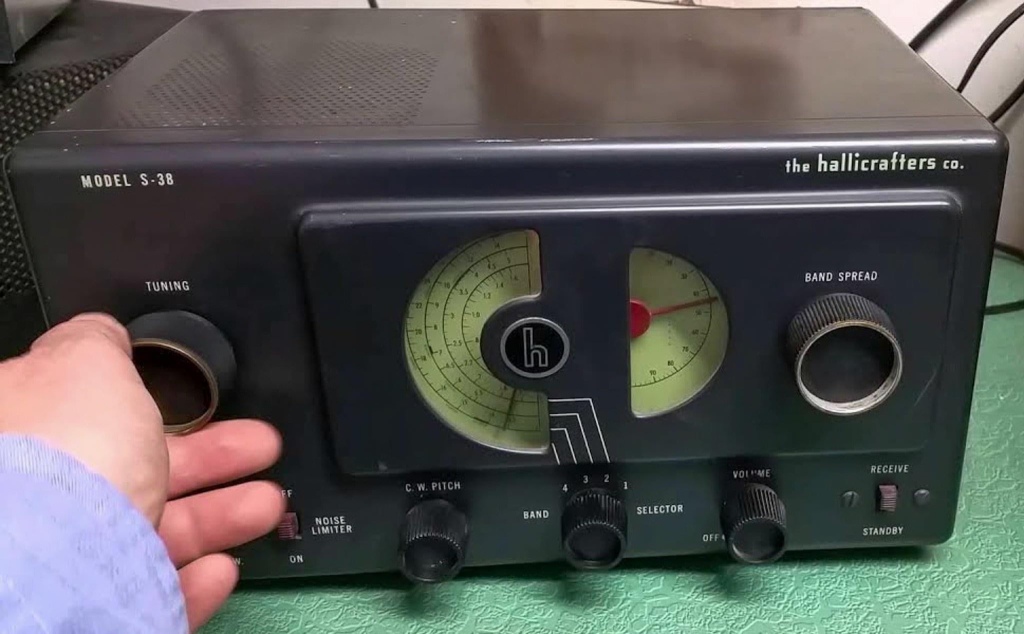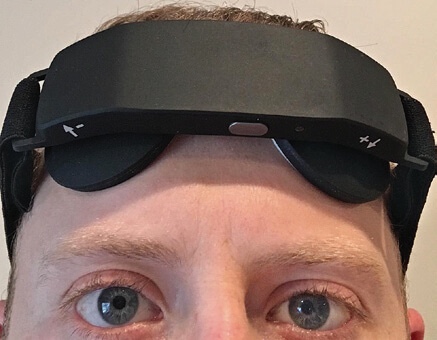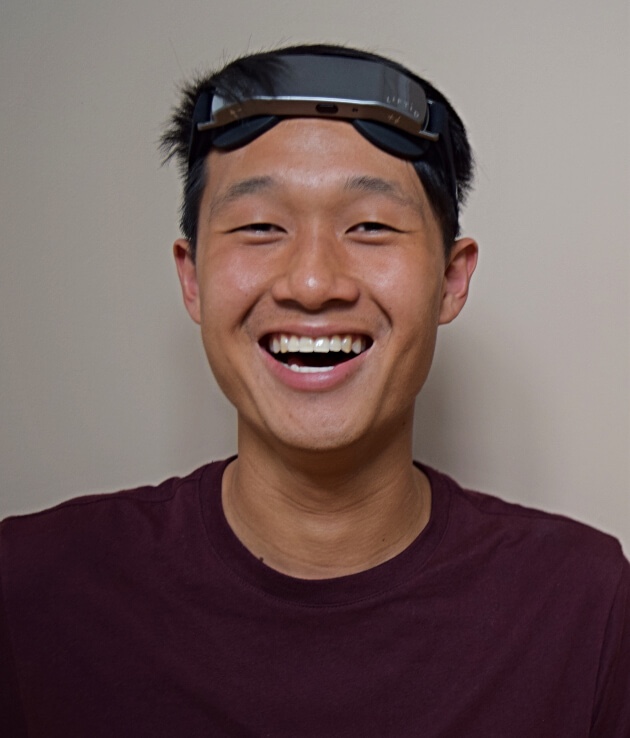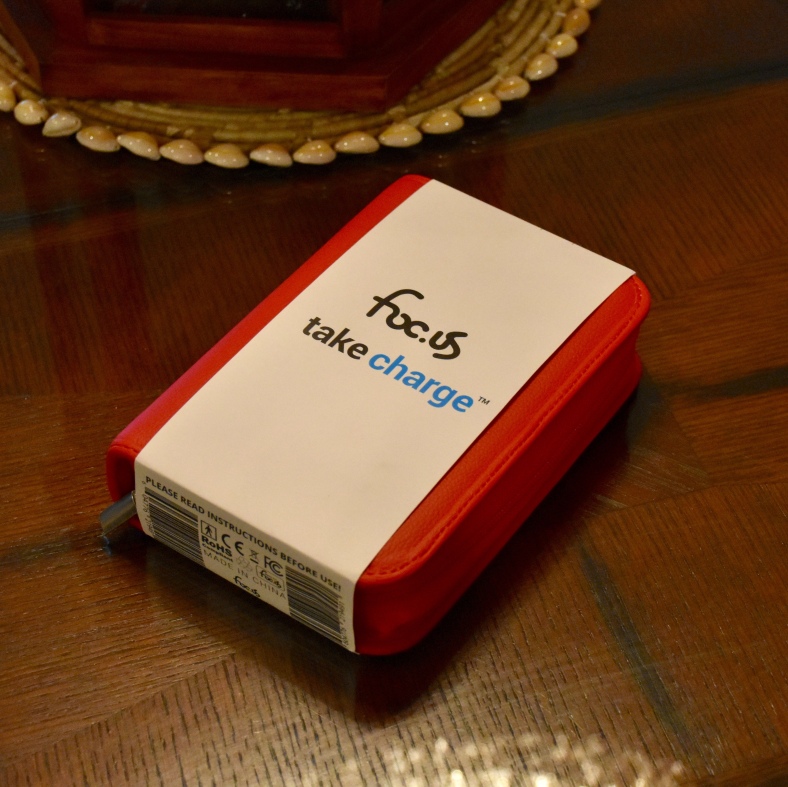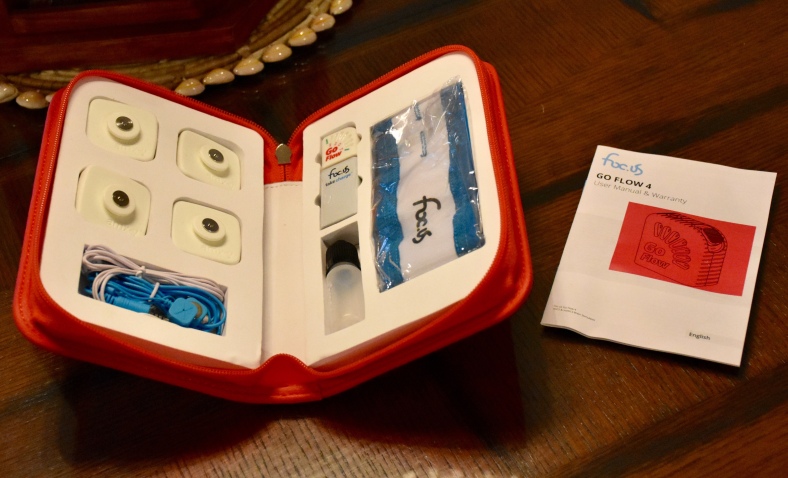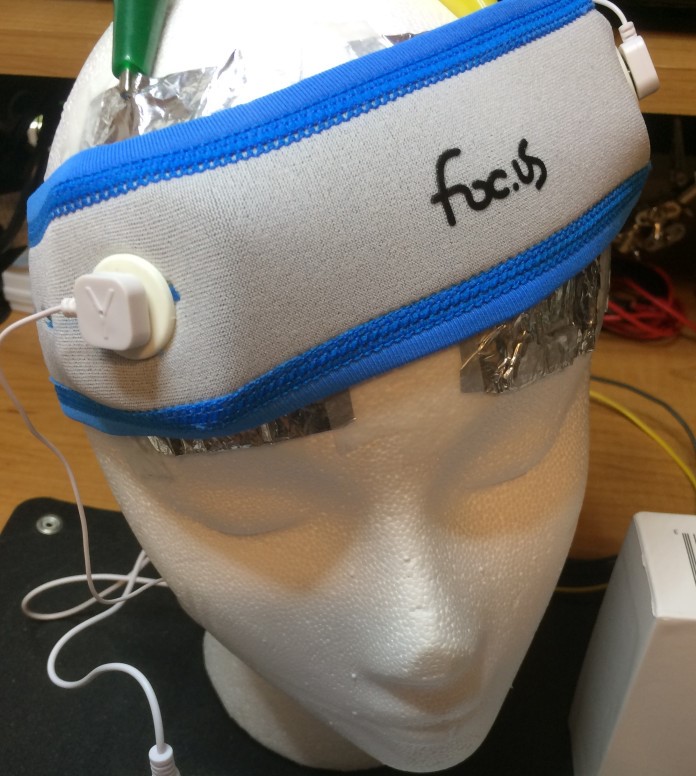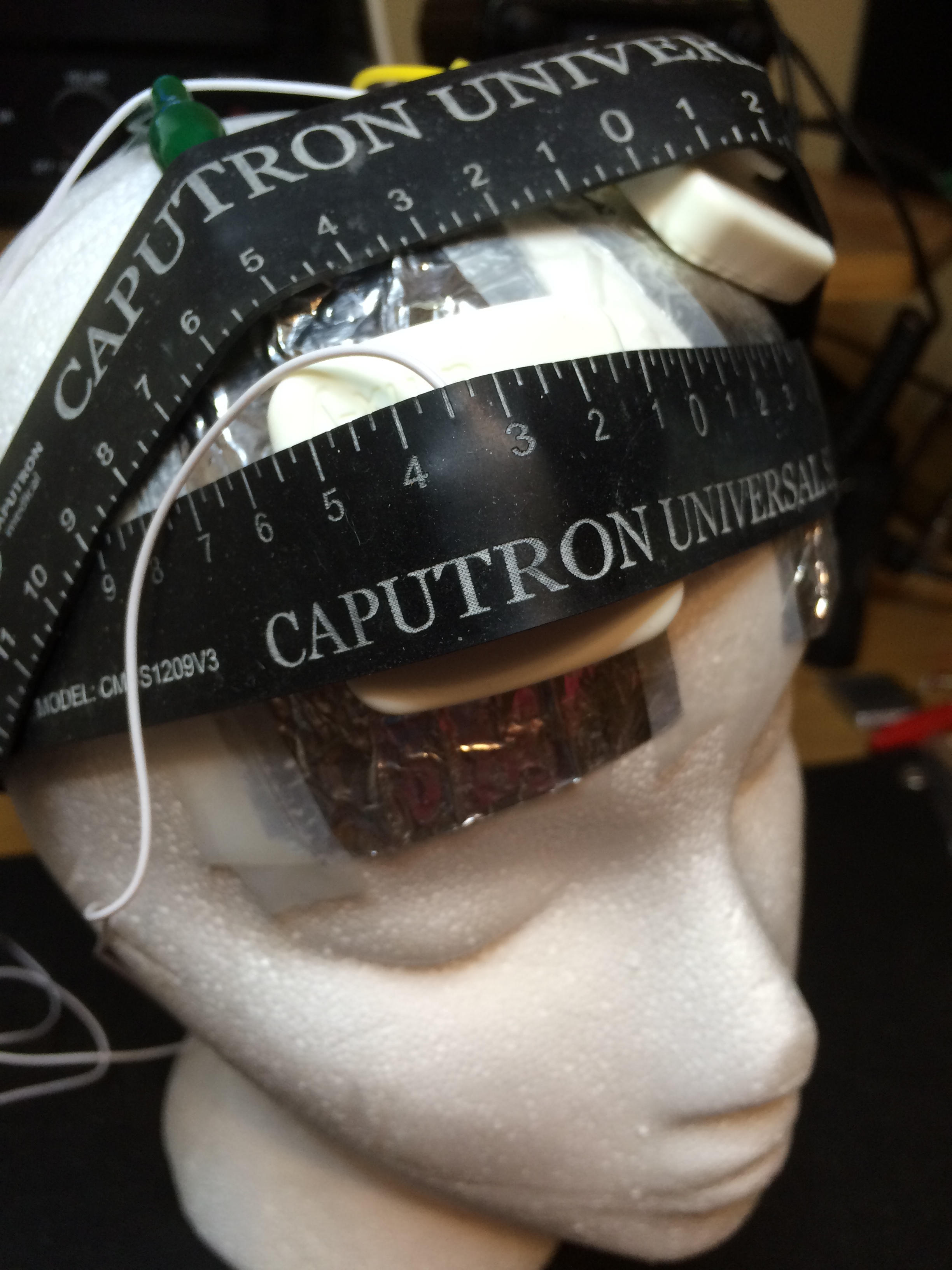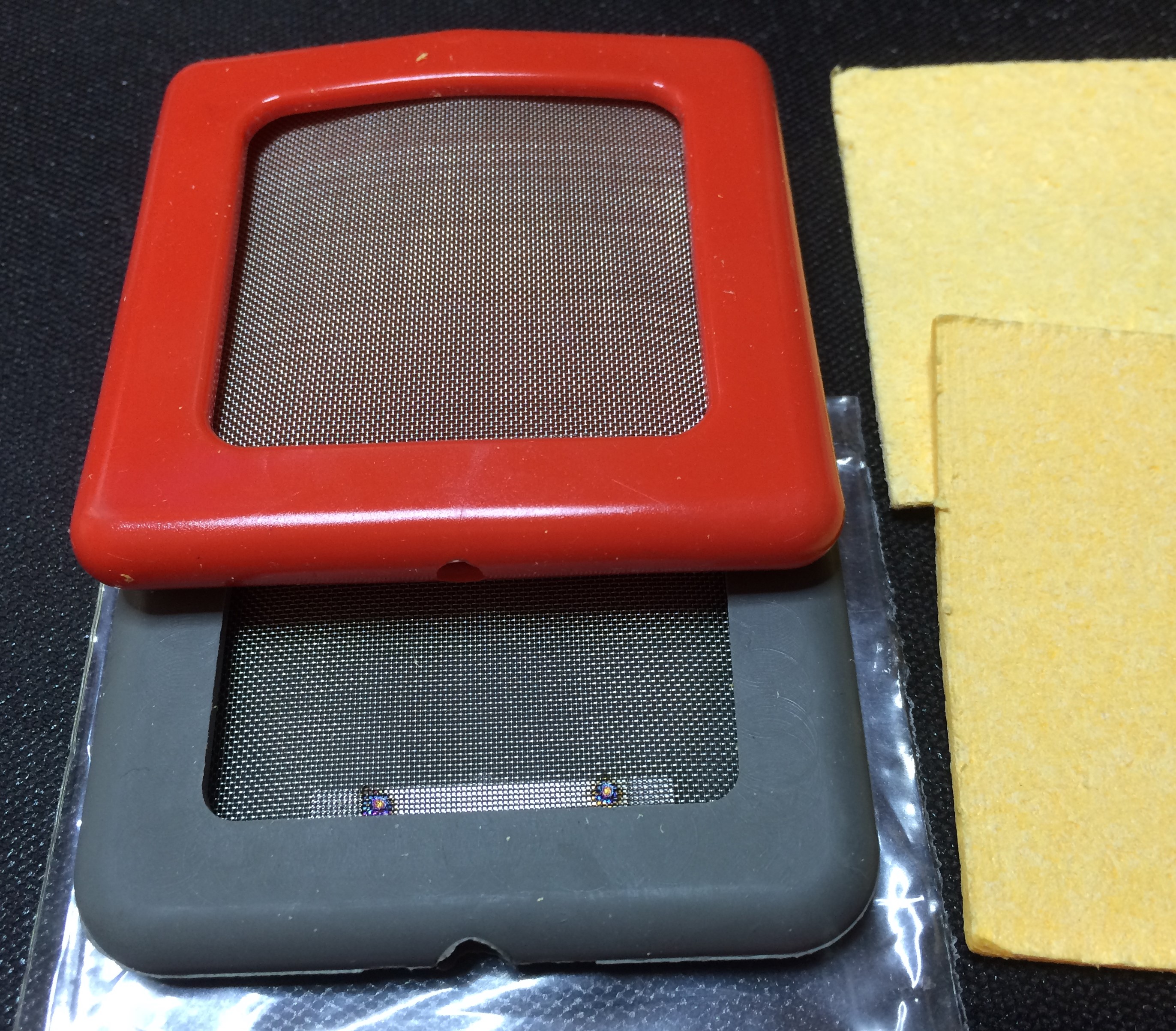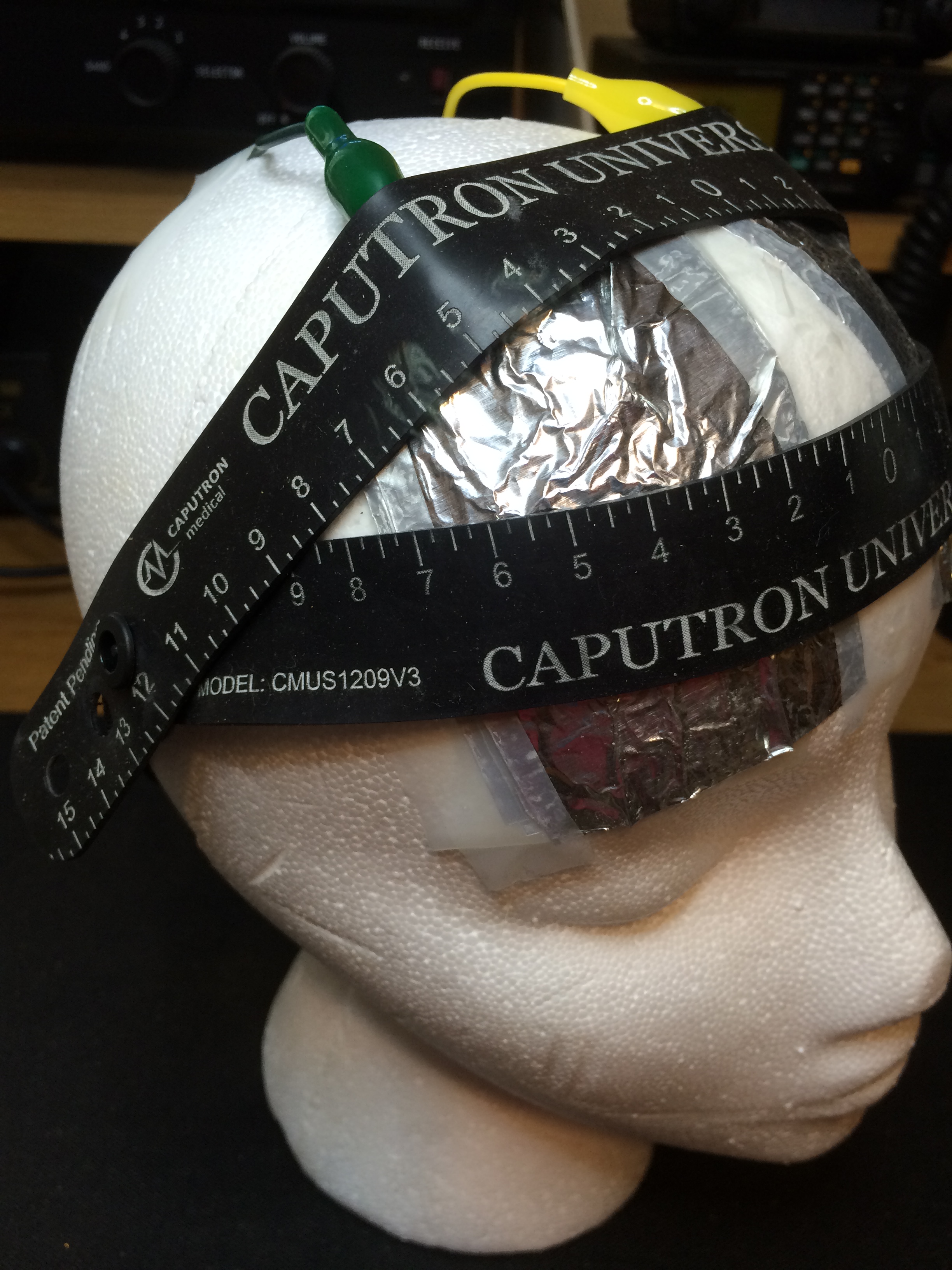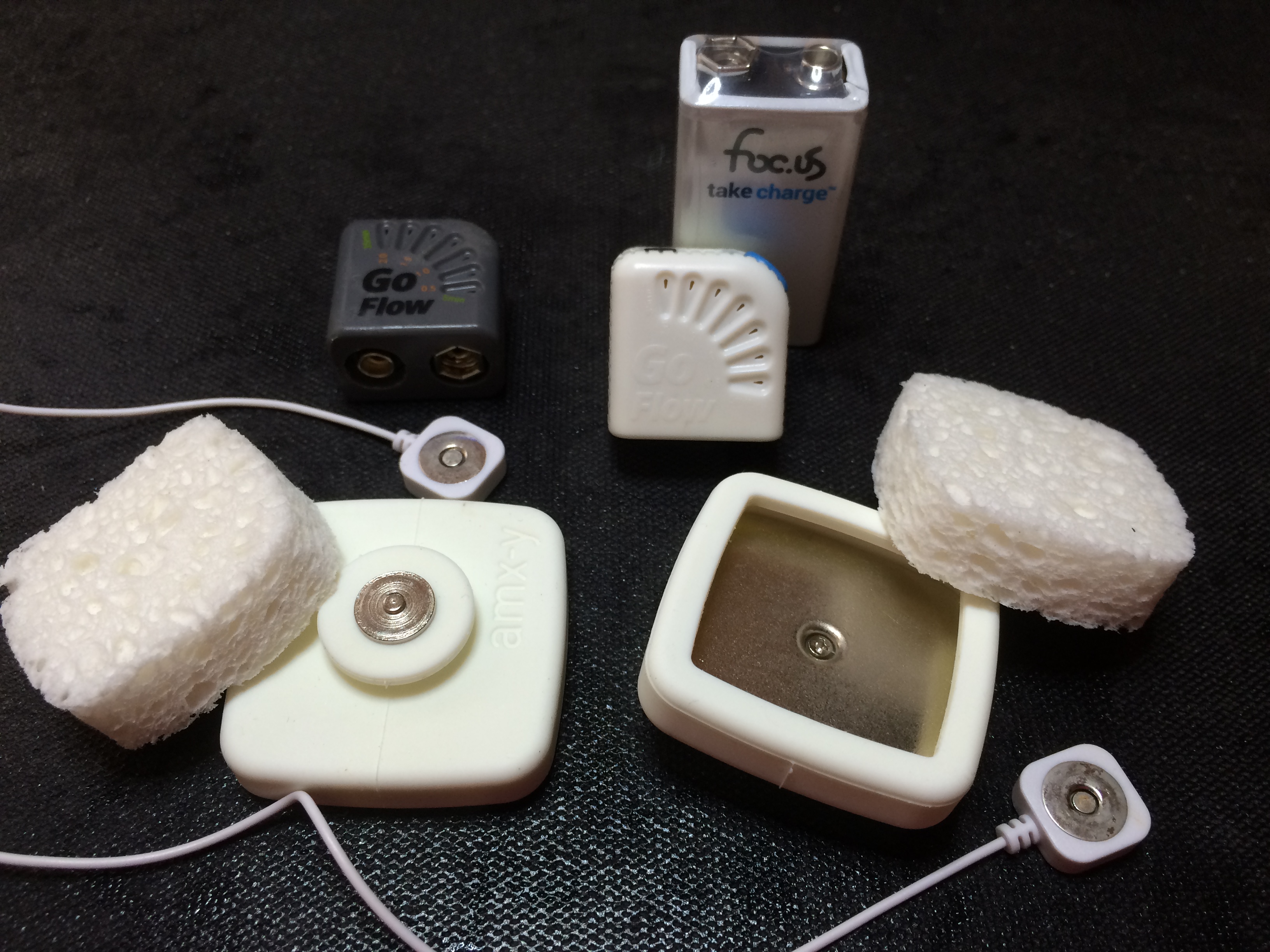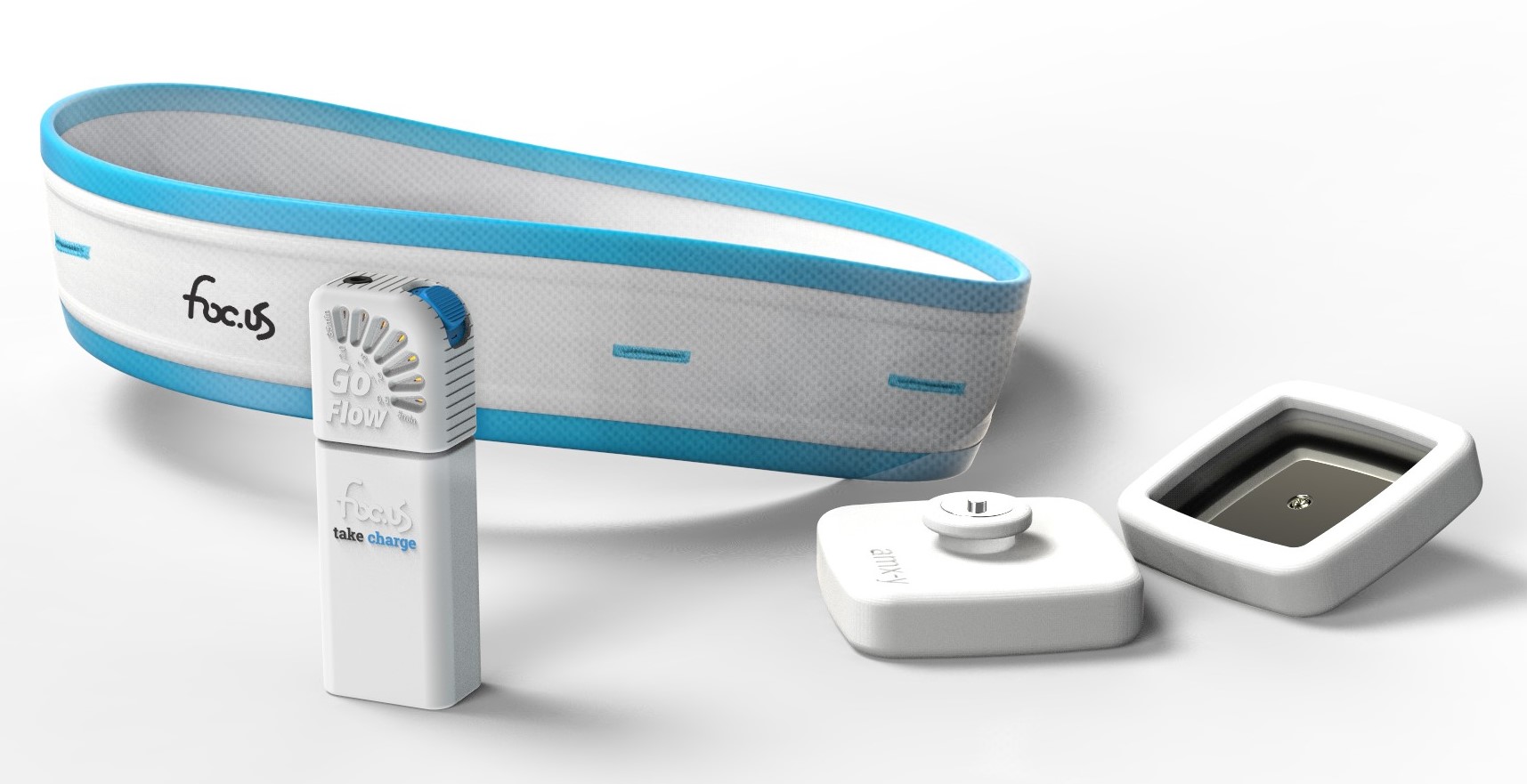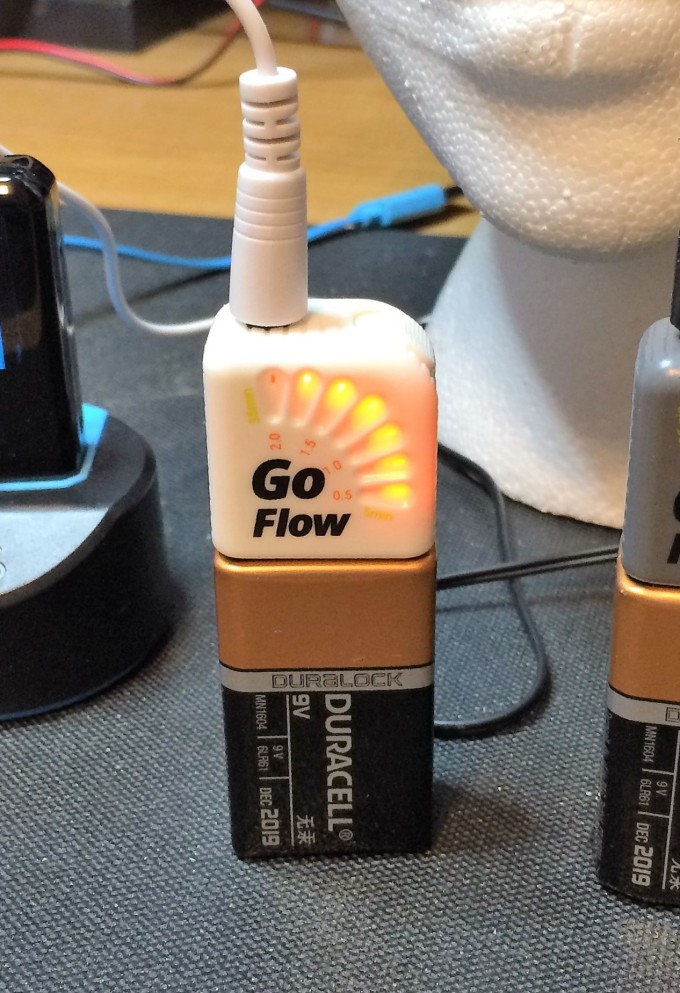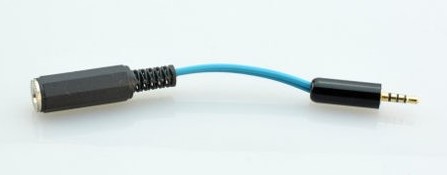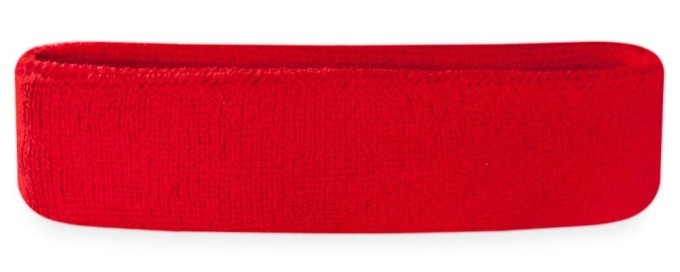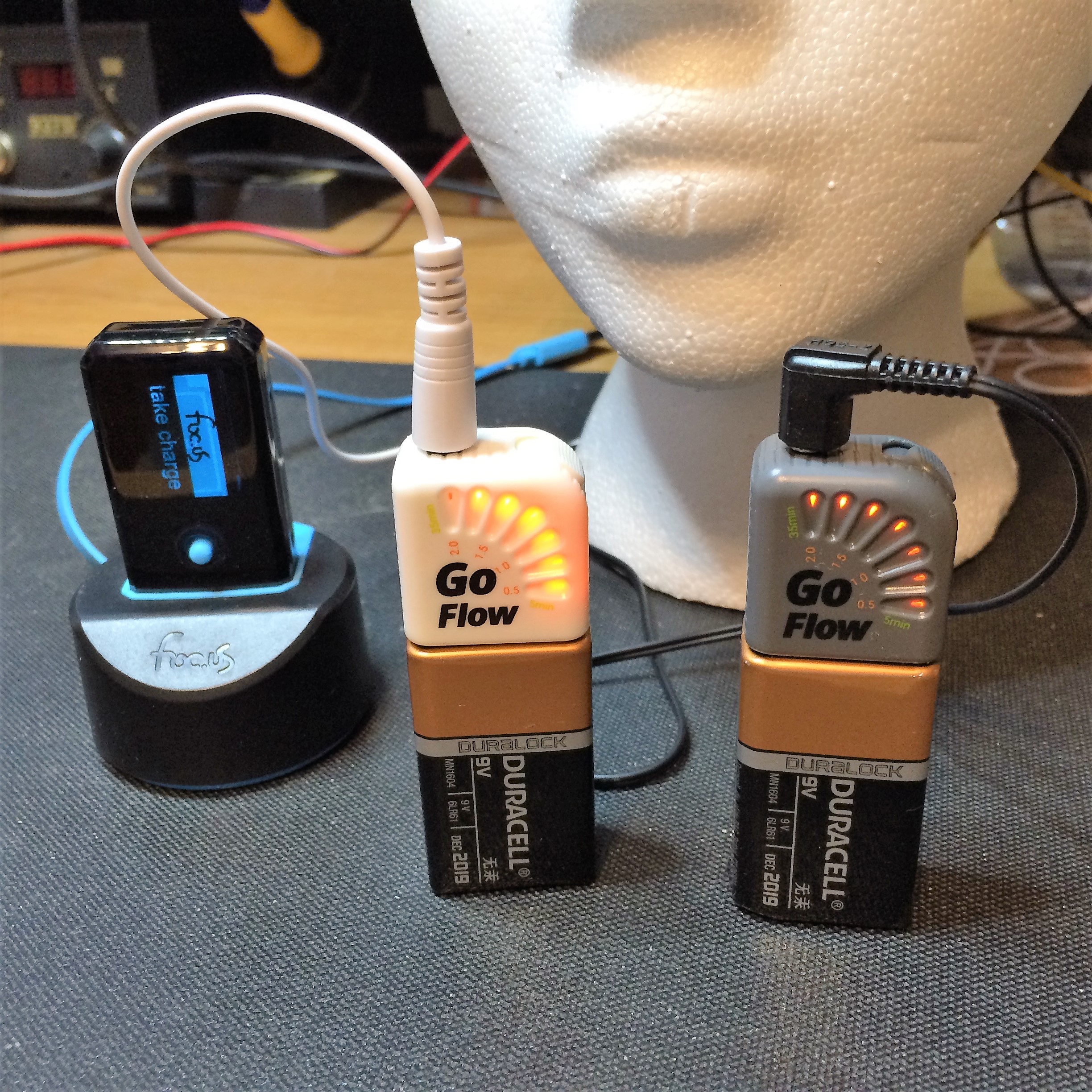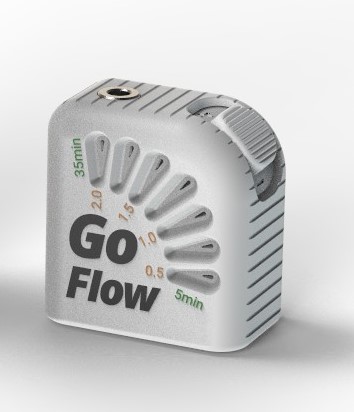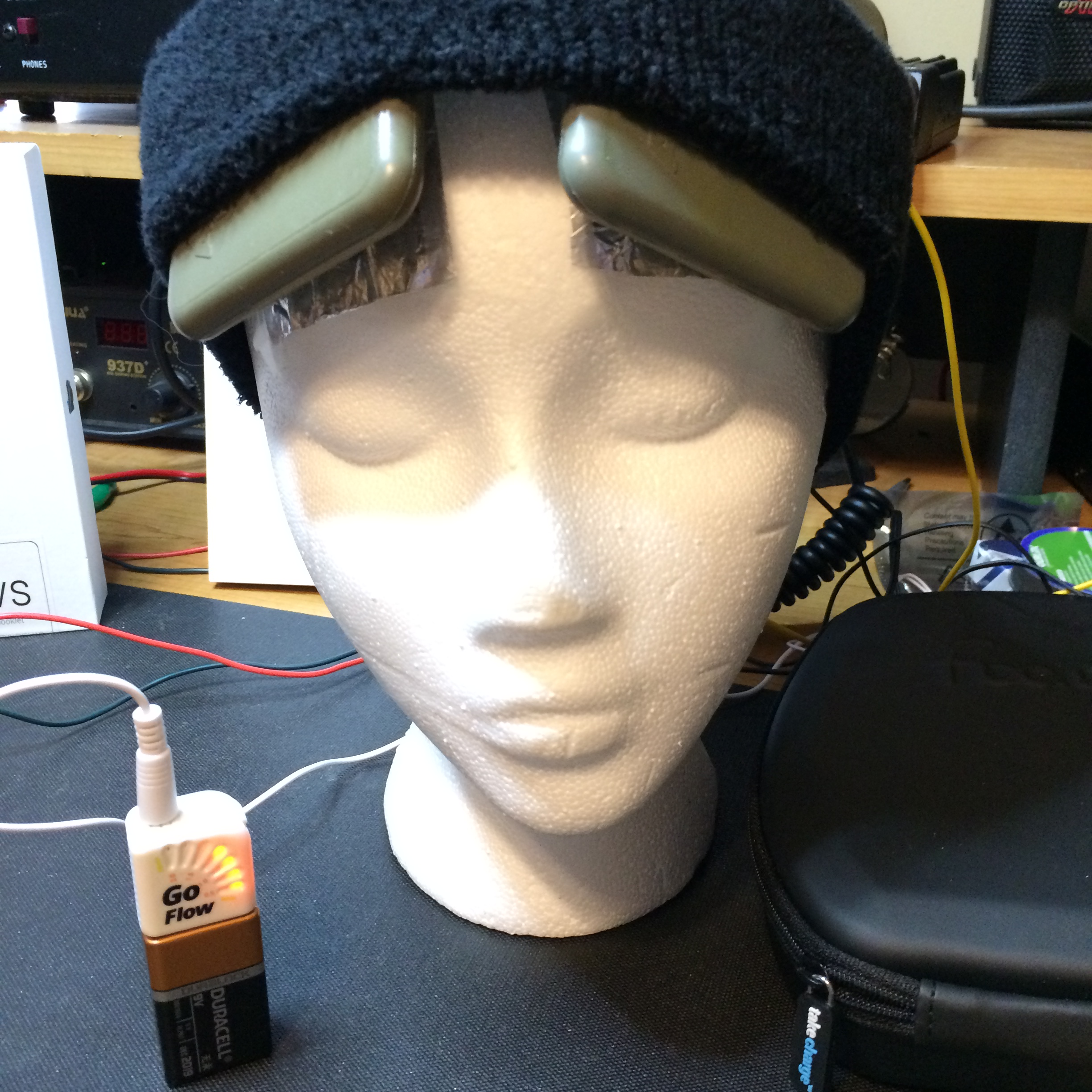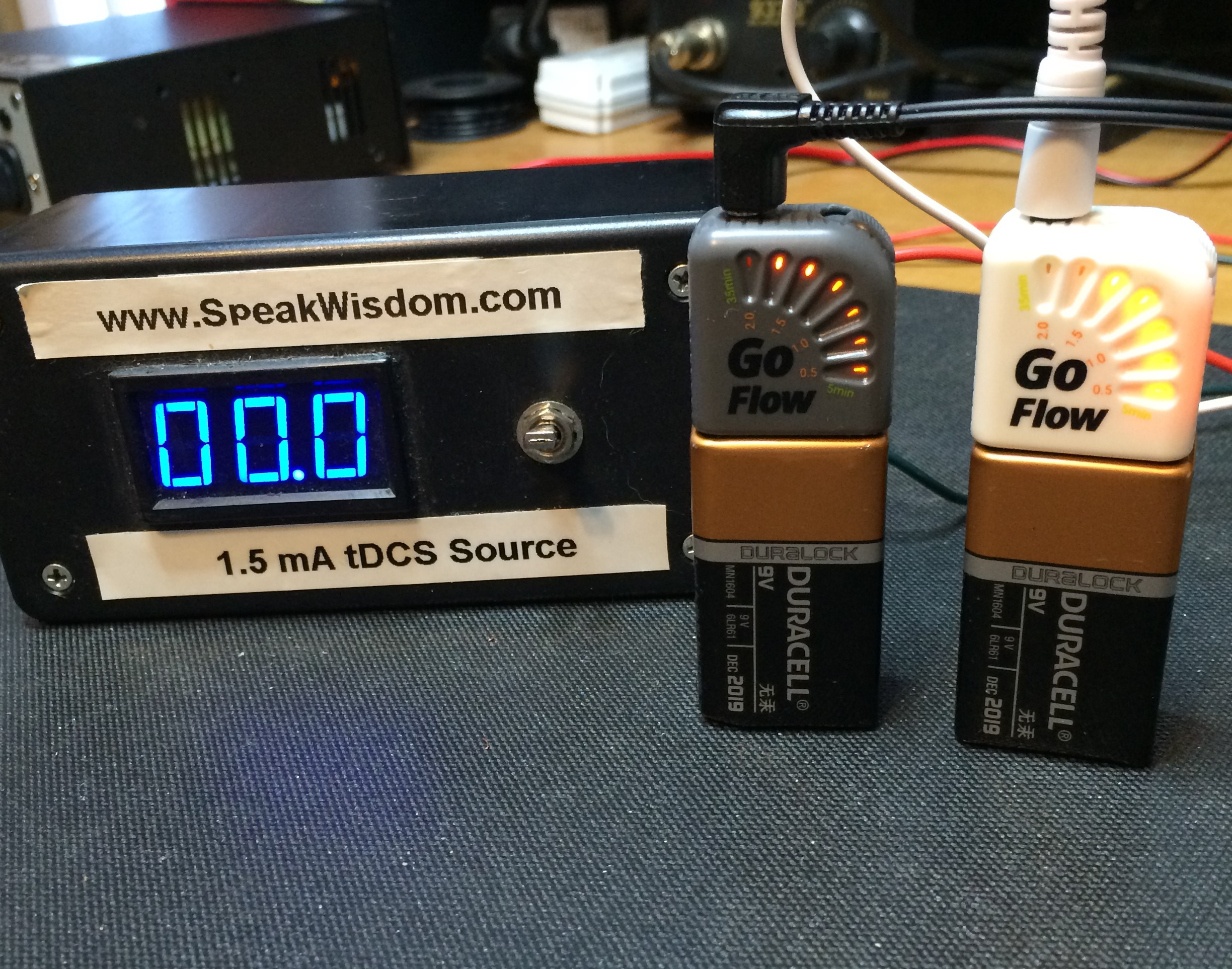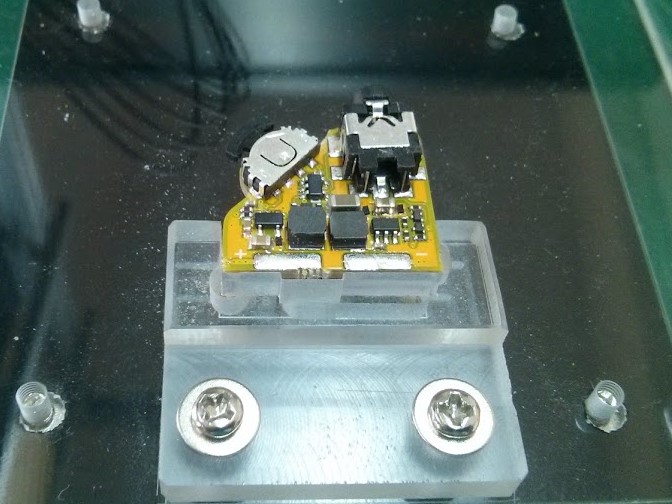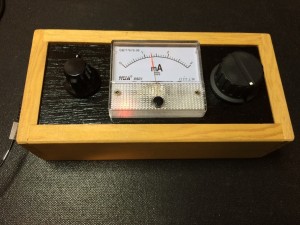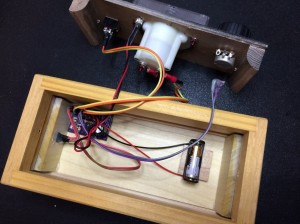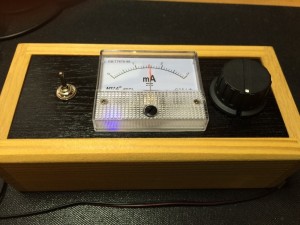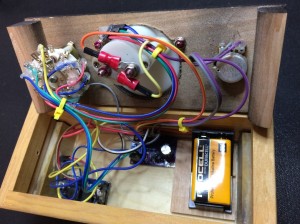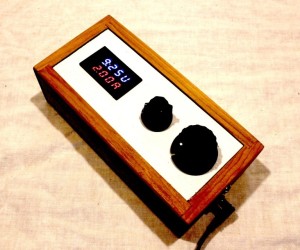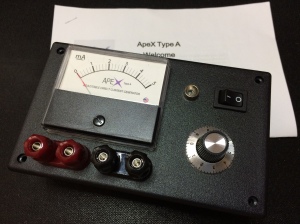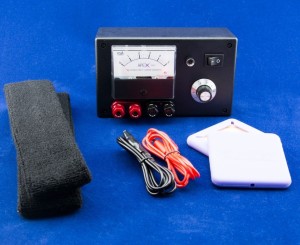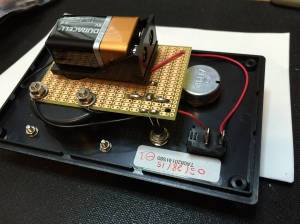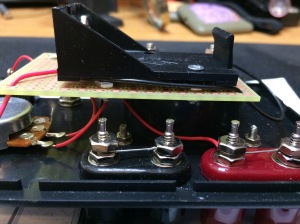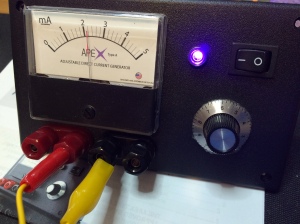Introduction
Foc.us, the London based small business that keeps innovating in the DIY tDCS* and brain stimulation space now has a number of products in their line. Some people are confused about which parts and pieces to buy in order to have the right stuff to move ahead with a tDCS treatment (or other) program. I thought I could help a little with this blog post.
The V2 Brain Stimulation Device
First, you will need a foc.us V2 stimulator device. The device currently sells for about $199 and with current firmware is far beyond any of the competition in terms of versatility, capability, portability, etc. I won’t take time here to list all of the MANY things the V2 can do, but suffice it to say that manufacturers of “professional grade” tDCS, tACS, etc. equipment are probably nervous about where foc.us is driving prices and capabilities! In my opinion, the V2 is THE brain stimulation device to buy at its price point.
Note: Though the V2 can be controlled via an IOS or Android device, it’s not really necessary. The V2 on-screen display and joystick will quickly and easily let you access V2 setup and features.
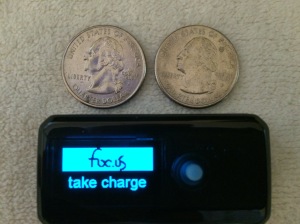
(The foc.us V2. In my opinion, a great brain stimulation device.)
Electrodes
Next, you need electrodes. Foc.us offers FOUR different electrode options for you to choose from:
Option 1: The Gamer Headset.
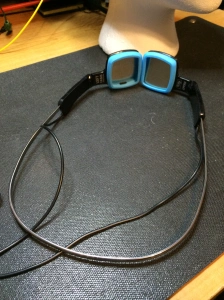
(The Gamer headset with sponges removed. Sponge holders can be separated from the metal band for added versatility.)
This is probably the best choice for most stimulation (tDCS) situations. It consists of two sponge electrodes mounted on a flexible band. The electrode “holders” can bend inward to place the electrodes properly on the forehead. HOWEVER, I find it best to remove the electrode holders from the band and use an elastic headband to position the electrode sponges as desired. The Gamer headset does NOT restrict electrode placement – you just need to add your own elastic band.
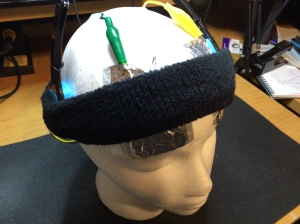
(Look closely at this pic and you will see the Gamer electrode holders have been removed from the included metal band. Instead they are placed on my test head using an elastic band – in this case for the savant montage.)
Option 2: The EDGE Headset.
This option should ONLY be selected IF you are interested in researching brain stimulation and its possible impact of athletic performance. This is a special-purpose (not general purpose) headset. The electrode placements are unusual and will not address the needs of most tDCS users.
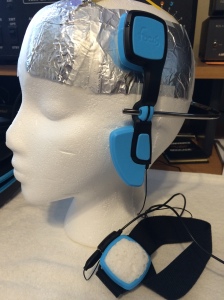
(The EDGE headset showing the main electrode at the top and the secondary electrode that would be attached to the upper arm at the bottom. This is a special purpose brain stimulation headset.)
Option 3: Moovs Stick-on Gel Electrodes
This is a new option from foc.us. It is a pair of electrodes that adhere to open areas of skin (NOT HAIR or through hair.) Because of this, they are a bit limited in terms of where they can be placed. They are light and very comfortable – and do stick to skin well. But if part of your treatment montage involves placing electrodes over hair – you should select the GAMER sponge headset (or option 4 below) instead. Remember, the Gamer electrodes can be placed anywhere with an elastic band.
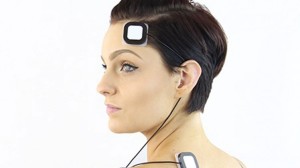
(The Moovs stick-on electrodes. Image from the foc.us website.)
Option 4: Your Own Electrodes
I and many other brain stimulation researchers and testers have been very pleased with the line of sponge electrodes from Amrex. Most of us use the 3×3 Amrex, but sometimes the smaller 2×2 is useful. The Amrex sponge electrodes are not cheap, but they are built to last. Foc.us to their credit makes it EASY to use your own electrodes, whatever you prefer, via a simple adapter cable (about $10 from foc.us). The cable allows you to plug in “TENS” compatible connecting wires, including those that have banana plugs for the Amrex electrodes. You can buy electrodes, wires, and more at almost any medical supply house – and via Amazon!
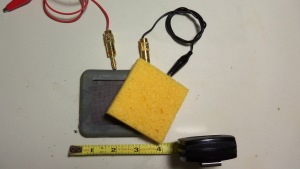
(The Amrex 3×3 is shown. It consists of a rubber shell, stainless wire screen, and a sponge. Connection is via a banana plug to a jack at the top of the electrode.)
Summary
The foc.us V2 represents the best capability I am aware of for DIY tDCS (and brain stimulation) users. Yes, there are many less expensive devices (tDCS) in the market and they are appropriate for those on limited budgets, just starting out with tDCS, etc. But if you want the most capability for your future brain stimulation needs, I don’t know of a better product in the market right now. Remember, you will need a foc.us V2 and electrodes. If you buy it all from foc.us you will spend around $300. If you choose to use your own electrodes (and connecting wires), you can spend a little less (total.)
Caveat
As I have mentioned, foc.us is a SMALL company based in London doing incredibly innovative work in the field of brain stimulation technology – with a focus (pardon the pun) on the DIY marketplace (not the multi-million dollar grant driven labs.) I believe they have become somewhat overwhelmed by their own success. So YOU may encounter slow service on any special request you make of foc.us (tech support, returns, etc.) Be prepared to be patient. The foc.us web site also is overly complicated by its attempts to be trendy. I suggest you hit the “All Products” link at the top left as a starting point.
By the way, foc.us will not diagnose or prescribe treatment for you – so don’t be upset if they ignore such requests. Do your homework on tDCS (brain stimulation), become informed, and make your own carefully considered decisions about brain stimulation and its appropriateness for your situation.
See the following for more information on tDCS:
www.speakwisdom.com
www.diytdcs.com
www.reddit.com/r/tdcs
www.transcranialbrainstimulation.com
*tDCS is transcranial direct current stimulation
